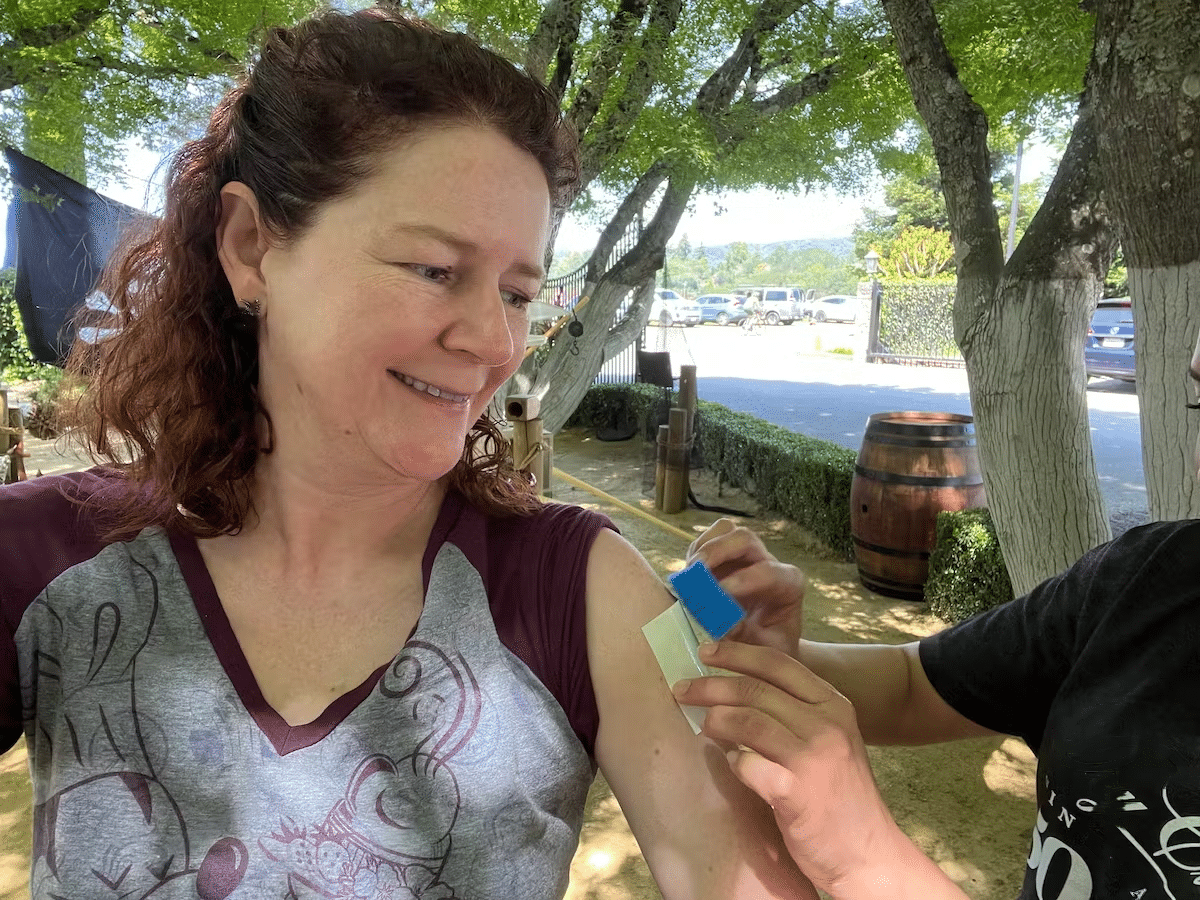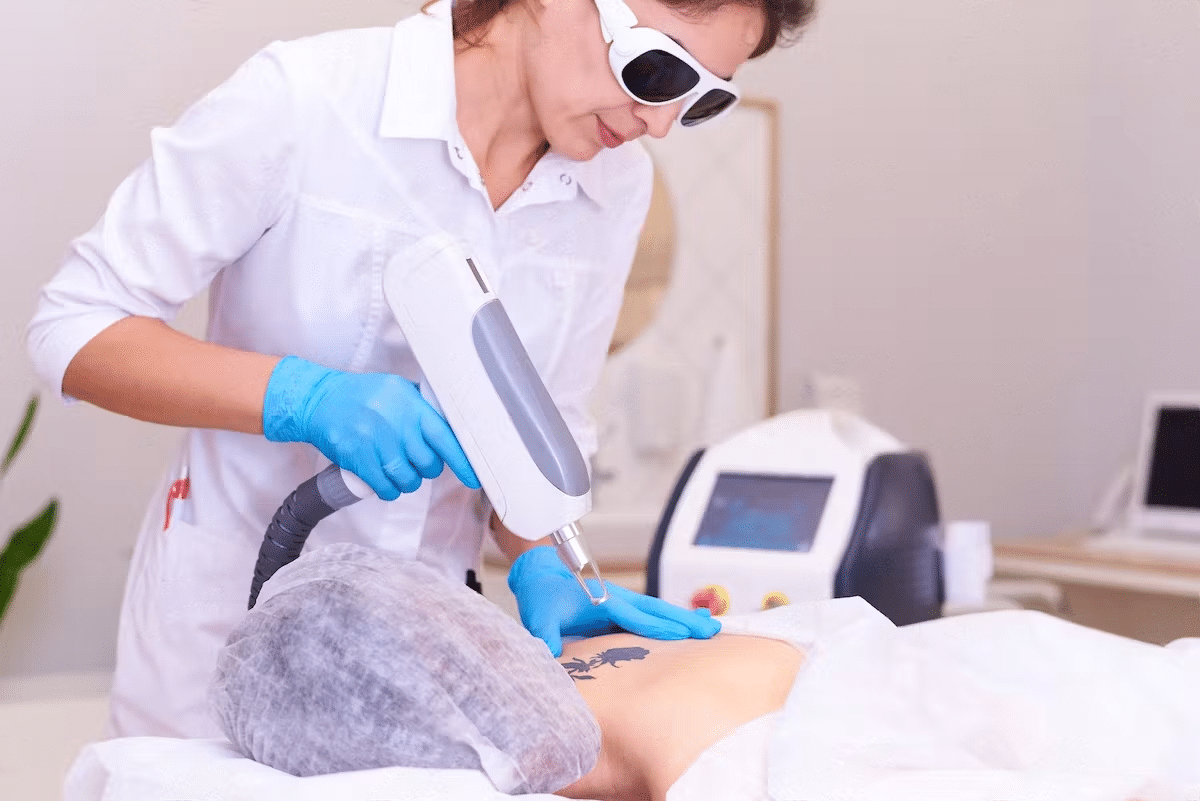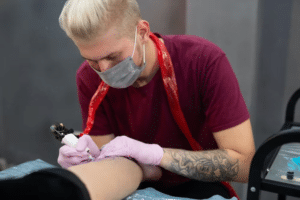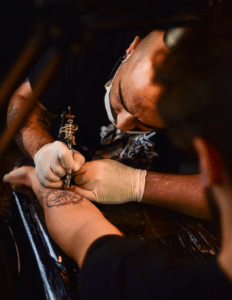 Temporary tattoos
Temporary tattoos are a fun way to express yourself without the commitment of a permanent tattoo. However, you may want to remove them sooner than they naturally fade away. Whether it’s because the design is no longer relevant or because you’re ready for a change, the good news is that there are various effective methods for removing temporary tattoos.In this blog, we’ll discuss some of the
most effective temporary tattoo removal methods that are safe and easy to do at home. We’ll also be providing you with some useful tips on how to make the process as painless and quick as possible.So, if you’re ready to say goodbye to your temporary tattoo and get started on removing it, keep reading. We’ve got you covered!
Temporary Tattoos And Their Popularity
Temporary tattoos have been around for centuries, with evidence of their use in ancient Egypt, Greece, and Rome. Today, temporary tattoos are a popular trend, with people of all ages sporting them on their bodies. They offer an excellent way to express oneself without the long-term commitment that comes with permanent tattoos.One of the reasons temporary tattoos have gained popularity is that
they are an easy and affordable way to try out different designs before committing to a permanent one. Additionally, temporary tattoos are popular for events like festivals, parties, and concerts.Another reason for the popularity of temporary tattoos is that they are a
safe and non-invasive alternative to permanent tattoos. Temporary tattoos don’t involve needles or their potential risks, making them a suitable option for those who may not want to undergo the pain or medical procedures required for a permanent tattoo.’
Kinds Of Temporary Tattoos
Temporary tattoos come in various styles and designs, and they are a great way to experiment with different looks without the long-term commitment of a permanent tattoo. Here are some of the most
popular types of temporary tattoos:
- Water Transfer Tattoos: These are the most common type of temporary tattoos. They are applied by wetting the paper backing and pressing the tattoo onto the skin. They are easy to apply and usually last for a few days.
- Henna Tattoos: Henna tattoos are a traditional form of body art that use a natural dye made from the henna plant. They are usually applied to the hands and feet and last up to two weeks.
- Airbrush Tattoos: These tattoos are created using an airbrush machine, which sprays ink onto the skin. They can last for up to a week and come in various designs.
- Glitter Tattoos: Glitter tattoos are a fun and sparkly option for temporary body art. They are usually created using stencils and a special glitter gel that dries quickly and can last for a few days.
- Flash Tattoos: Flash tattoos are metallic temporary tattoos in various designs. They are usually applied to the arms, legs, or back and last up to a week.
No matter what type of temporary tattoo you choose, it’s important to remember to take care of it properly to ensure it lasts as long as possible. And when you’re ready to remove it, there are various effective methods to choose from!
Reasons For Removing Temporary Tattoos

There are many
reasons why people may want to remove their temporary tattoos, including:
- The temporary tattoo has faded or no longer looks as good as when first applied.
- The temporary tattoo was applied for a special event or occasion and is no longer needed.
- The individual has changed their mind about the design of the temporary tattoo or no longer wants it on their skin.
- The individual has a new job or occupation that requires them to have a tattoo-free appearance.
- The individual may have an allergic reaction to the temporary tattoo, causing skin irritation or discomfort.
Regardless of the reason, Pearl Lemon offers effective removal techniques for those looking to remove their temporary tattoos.
Risks Associated With Improper Temporary Tattoo Removal

Improper temporary tattoo removal can cause several
risks and complications, such as:
- Skin irritation: Harsh scrubbing or using abrasive materials to remove the temporary tattoo can cause skin irritation and damage.
- Scarring: Improper removal techniques can cause scarring, particularly if the tattoo is in a sensitive area or if the removal process is overly aggressive.
- Infection: If the skin is not properly cleaned and disinfected before removal, it can lead to infections.
- Allergic reactions: Some people may be allergic to the ink used in the temporary tattoo, and removal can trigger an allergic reaction.
- Discolouration: Overly aggressive removal techniques can cause discolouration or hyperpigmentation in the skin.
It is essential to take the appropriate steps and precautions to avoid these risks and ensure the safe and effective removal of temporary tattoos.
Most Effective Temporary Tattoo Removal Methods
When it comes to removing temporary tattoos, there are several effective methods that you can try. Here are some of the most
commonly used methods:Rubbing Alcohol:
One of the easiest ways to remove a temporary tattoo is rubbing alcohol. Soak a cotton ball in rubbing alcohol and gently rub it over the tattoo until it disappears.
Baby Oil
Another effective method is to use baby oil. Apply a few drops of baby oil to the tattoo and let it sit for a few minutes. Then, gently rub the tattoo with a cotton ball until it fades.
Olive Oil
Olive oil is also a great option for removing temporary tattoos. Apply a small amount of olive oil to the tattoo and let it sit for a few minutes. Then, use a cotton ball to rub the tattoo until it gradually fades away.
Tape
Try using tape to remove temporary tattoos. Place a piece of tape over the tattoo and press down firmly. Then, peel the tape off in one swift motion. This method may take a few tries to remove the tattoo completely.
Baking Soda
Baking soda is a natural exfoliant that can also help remove temporary tattoos. Mix a small amount of baking soda with water to create a paste. Then, apply the paste to the tattoo and let it sit for a few minutes. Use a damp cloth to scrub the tattoo until it fades gently.It’s important to note that some temporary tattoos may be more difficult to remove than others, depending on their size and the type of ink used. If you’re having trouble removing a tattoo or experiencing any irritation, it’s best to consult with a medical professional.
Conclusion
There you have it – some of the most effective methods for removing temporary tattoos! Whether you want to get rid of a tattoo that no longer resonates with you or wants to switch things up, these methods are safe and easy to do at home.Remember to be gentle with your skin when removing the tattoo, and if you experience any irritation or discomfort, stop immediately and consult a medical professional.While temporary tattoos can be a fun way to express yourself,
it’s important to note that they are not without their risks. Always be mindful of the materials used, and avoid using harsh chemicals or abrasive methods that could damage your skin.And if you do decide to get another temporary tattoo in the future, you can do so with the knowledge that removing it is just a few simple steps away.
FAQS
How long does it take for a temporary tattoo to fade?
The time it takes for a temporary tattoo to fade depends on various factors, such as the tattoo’s quality and the body’s location. Typically, temporary tattoos can last from a
few days to weeks.Can I use nail polish remover to remove a temporary tattoo?
Nail polish remover is
not recommended for removing temporary tattoos as it can be too harsh for the skin and may cause irritation.
How can I make a temporary tattoo fade faster?
To make a temporary tattoo fade faster, try rubbing it with
rubbing alcohol or applying a small amount of
baby oil. However, it is important to be gentle and avoid excessive rubbing to prevent skin irritation.
 Temporary tattoos are a fun way to express yourself without the commitment of a permanent tattoo. However, you may want to remove them sooner than they naturally fade away. Whether it’s because the design is no longer relevant or because you’re ready for a change, the good news is that there are various effective methods for removing temporary tattoos.In this blog, we’ll discuss some of the most effective temporary tattoo removal methods that are safe and easy to do at home. We’ll also be providing you with some useful tips on how to make the process as painless and quick as possible.So, if you’re ready to say goodbye to your temporary tattoo and get started on removing it, keep reading. We’ve got you covered!
Temporary tattoos are a fun way to express yourself without the commitment of a permanent tattoo. However, you may want to remove them sooner than they naturally fade away. Whether it’s because the design is no longer relevant or because you’re ready for a change, the good news is that there are various effective methods for removing temporary tattoos.In this blog, we’ll discuss some of the most effective temporary tattoo removal methods that are safe and easy to do at home. We’ll also be providing you with some useful tips on how to make the process as painless and quick as possible.So, if you’re ready to say goodbye to your temporary tattoo and get started on removing it, keep reading. We’ve got you covered! There are many reasons why people may want to remove their temporary tattoos, including:
There are many reasons why people may want to remove their temporary tattoos, including: Improper temporary tattoo removal can cause several risks and complications, such as:
Improper temporary tattoo removal can cause several risks and complications, such as:



